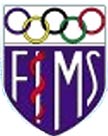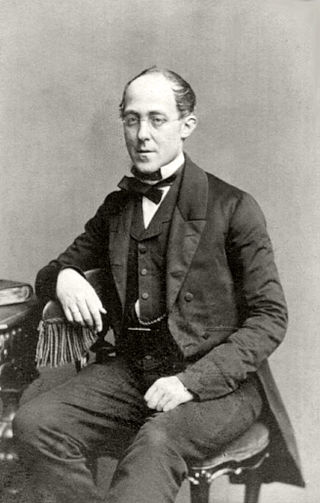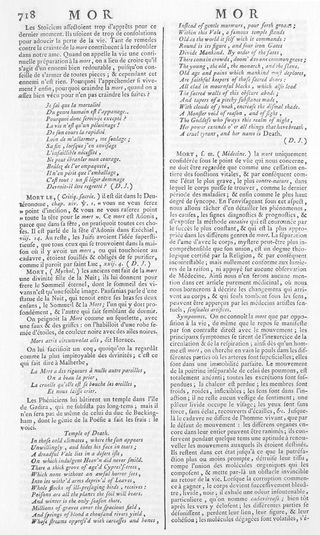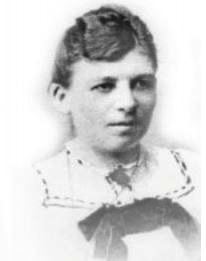Related Research Articles
In mathematics, ancient Egyptian multiplication, one of two multiplication methods used by scribes, is a systematic method for multiplying two numbers that does not require the multiplication table, only the ability to multiply and divide by 2, and to add. It decomposes one of the multiplicands into a set of numbers of powers of two and then creates a table of doublings of the second multiplicand by every value of the set which is summed up to give result of multiplication.

Raphael Evers is a Dutch-Israeli Orthodox rabbi. He was a rabbi in the Netherlands and Germany. On August 1, 2021, he made aliyah to Israel.
The Egyptian Mathematical Leather Roll (EMLR) is a 10 × 17 in (25 × 43 cm) leather roll purchased by Alexander Henry Rhind in 1858. It was sent to the British Museum in 1864, along with the Rhind Mathematical Papyrus, but it was not chemically softened and unrolled until 1927 (Scott, Hall 1927).

International Federation of Sports Medicine is an international organization comprising national sports medicine associations that span all five continents.

Wilhelmina Drucker was a Dutch politician and writer. One of the first Dutch feminists, she was also known under her pseudonyms Gipsy, Gitano, and E. Prezcier.
Jacobus Ruurd "Jaap" Bruijn, was a Dutch maritime historian. He was professor of maritime history at the University of Leiden from 1979 until his retirement in 2003. During his 41-year teaching career as The Netherlands' only university professor of maritime history, he guided the doctoral theses of at least 49 graduate students.

David Bierens de Haan was a Dutch mathematician and historian of science.
The Royal Academy of Science, Letters and Fine Arts of Belgium is the independent learned society of science and arts of the French Community of Belgium. One of Belgium's numerous academies, it is the French-speaking counterpart of the Royal Flemish Academy of Belgium for Science and the Arts. In 2001 both academies founded a joint association for the purpose of promoting science and arts on an international level: The Royal Academies for Science and the Arts of Belgium (RASAB). All three institutions are located in the same building, the Academy Palace in Brussels.
Christ P. M. Klep is a Dutch military historian. He is a lecturer at Utrecht University and freelance historian and publicist. He has appeared amongst others on Pauw & Witteman, NPO Radio 1 and Knevel & Van de Brink, and has written for de Volkskrant, Trouw and De Groene Amsterdammer - commenting on topics as the Joint Strike Fighter program, the Russian military intervention in Ukraine and the recruiting practices of the Armed forces of the Netherlands.

Jean-Eugène Dezeimeris was a French librarian and historian of medicine.

Jean-Joseph Menuret, called Menuret de Chambaud was a French physician and author of a number of medical treatises. He also contributed to the Encyclopédie by Diderot and d'Alembert.
Jack B. van den Berg is a Dutch football manager and a former player. While coaching ASWH, he won the 2005 national amateur championship and the 2006 Rinus Michels Award for managers in nonprofessional leagues. During a long stint at BVV Barendrecht Van den Berg became a full-time coach. In 2015–2016 he coached the first squads of two small town rivals, promoting both ASWH to the Saturday Derde Divisie and IFC to the Sunday Hoofdklasse. From February until October 2018 he coached VV Katwijk, winning a Tweede Divisie championship.

Emma Trosse was a German teacher and school administrator. Trained as a teacher and later passing an examination to be a principal, Trosse began her career working in public schools and as a private tutor. In 1895, she published one of the first scientific works on homosexuality and advocated for legal protections for homosexuals. She was the first known woman to scientifically discuss lesbianism. She also published books analyzing ancient medical practices in medieval Europe, and among the Greeks and Egyptians. After her marriage, she became a clinician in her husband's diabetes clinic, and began writing literature on diabetes.

We Are Here is a collective of migrants based in Amsterdam, the Netherlands, which campaigns for human rights for its members and all undocumented migrants. The asylum seekers have in many cases had their applications to remain in the Netherlands denied but they either cannot go back or refuse to return to their country of origin. They demand access to social services such as medical care and housing. The group formed in 2012 and by 2015 contained over 200 migrants from around 15 countries.

The Tabakspanden are a group of buildings standing on the Spuistraat in central Amsterdam, adjacent to the Keizerrijk and Wijdesteeg alleyways. Named after a former owner, the speculator Hendrik Tabak, they were mostly squatted from 1983 onwards, although the artist Peter Klashorst also rented an apartment and gallery space. The best known building was Spuistraat 199, known as the Slangenpand (Snakehouse) because of the large mural which covered the front exterior. In 2015, the squatters were evicted and the buildings were mostly demolished prior to redevelopment. The new project is known as De Keizer and has 69 apartments, a restaurant and a gallery. Two of the buildings are registered as rijksmonumenten.
Abd El Razzaq Ibn Mouhammed Ibn Hamadouch Al-Jazaïri, also known as Abd El Razzaq Al-Jazaïri was an important 17-18th-century Algerian Muslim physician and scientist. His most important work was Kachef Eroumouz fi eharh-El-aquakir ou El-alchbab , which is a treatise on medical subject classified in alphabetical order. This book was very successful in Algeria and Maghreb, and more generally throughout all of the Arab world, and influenced Islamic medicine.
Antoine Constant Saucerotte was a French physician known in the 19th century for his popularisation work.

Charles Adolphe Ernest Wickersheimer was a French physician, librarian and historian of medicine.
References
- ↑ Janus, WorldCat, OCLC 1641906
- 1 2 3 4 5 6 7 8 Bockstaele, Paul (2002), "Benelux", in Dauben, Joseph W.; Scriba, Christoph J. (eds.), Writing the History of Mathematics: Its Historical Development, Science Networks: Historical Studies, vol. 27, Birkhäuser, pp. 45–60, ISBN 9783764361679 . See in particular p. 57.
- ↑ Edelstein, Ludwig (January 1947), "Medical Historiography in 1847", Bulletin of the History of Medicine, 21: 495–511, ProQuest 1296293164 See in particular pp. 507–508.
- ↑ Peypers, Hendrik Fredrik August (1895), Lues Medii Aevi, Amsterdam: Binger Bros., p. xix
- ↑ Janus, Hathitrust Digital Library, pp. v, retrieved 2017-11-15
- ↑ Snelders, H. A. M. (July 1987), "History of Science Today, 2.: History of Science in the Netherlands", The British Journal for the History of Science, 20 (3): 343–348, doi:10.1017/s0007087400023980, JSTOR 4026361, PMID 11621335
- 1 2 3 4 Knobloch, Eberhard (November 1991), "Evert Marie Bruins (1909–1990)", Historia Mathematica, 18 (4): 381–389, doi: 10.1016/0315-0860(91)90383-9